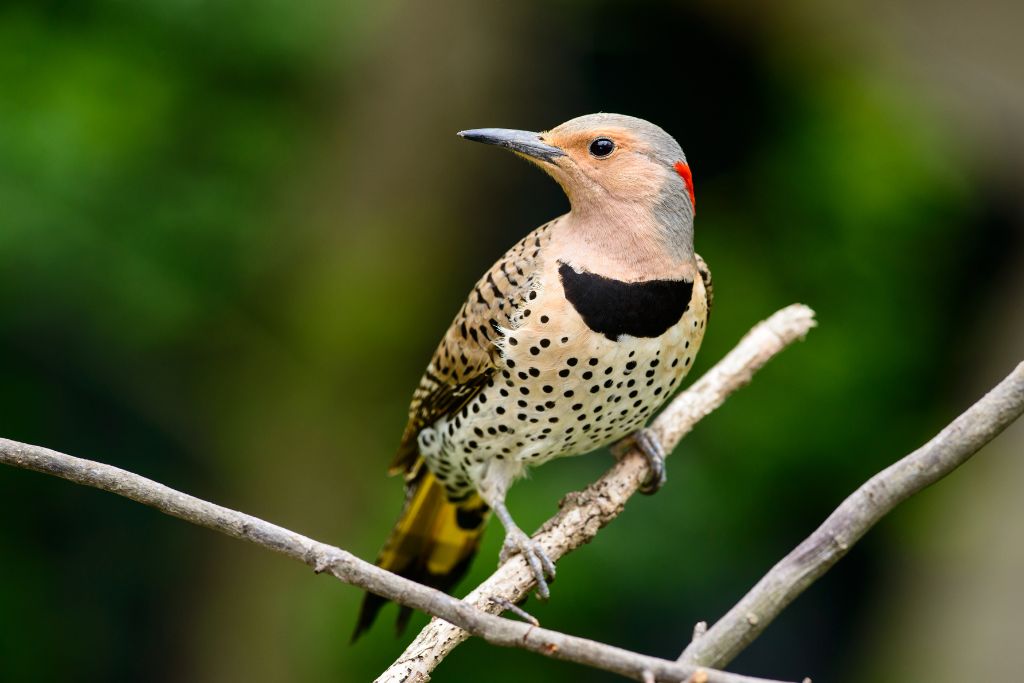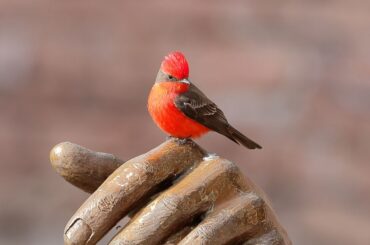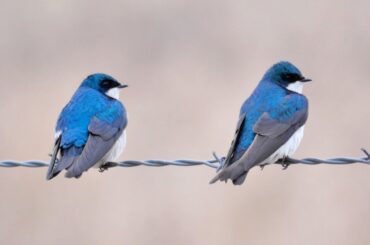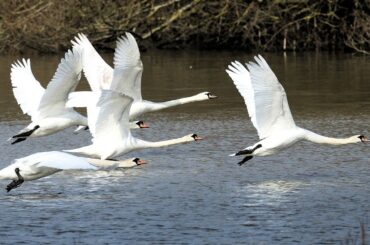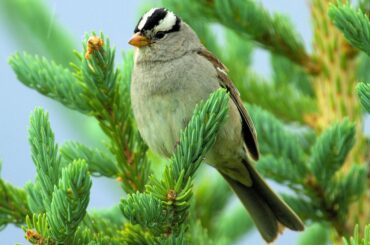Have you ever marveled at the rhythmic drumming echoing through the forests of Michigan? If so, you’ve probably seen this region’s charismatic and hardworking woodpeckers.
Woodpeckers in Northern Michigan have a remarkable adaptation that allows them to excavate their homes with astonishing precision. Their beaks, acting as chisels, can chip away at tree trunks at an impressive rate of 20 times per second!
This expert drilling makes cozy nest holes and helps woodpeckers find insects, larvae, and sap, an essential component of their diet.
Did you know that woodpeckers possess a built-in shock absorber to protect their brains from the intense impact of pecking? These extraordinary birds have a “spongy bone” that cushions their sensitive brains. This adaptation ensures that woodpeckers can repeatedly drum on trees without causing harm to themselves.
1. American Three-Toed Woodpecker
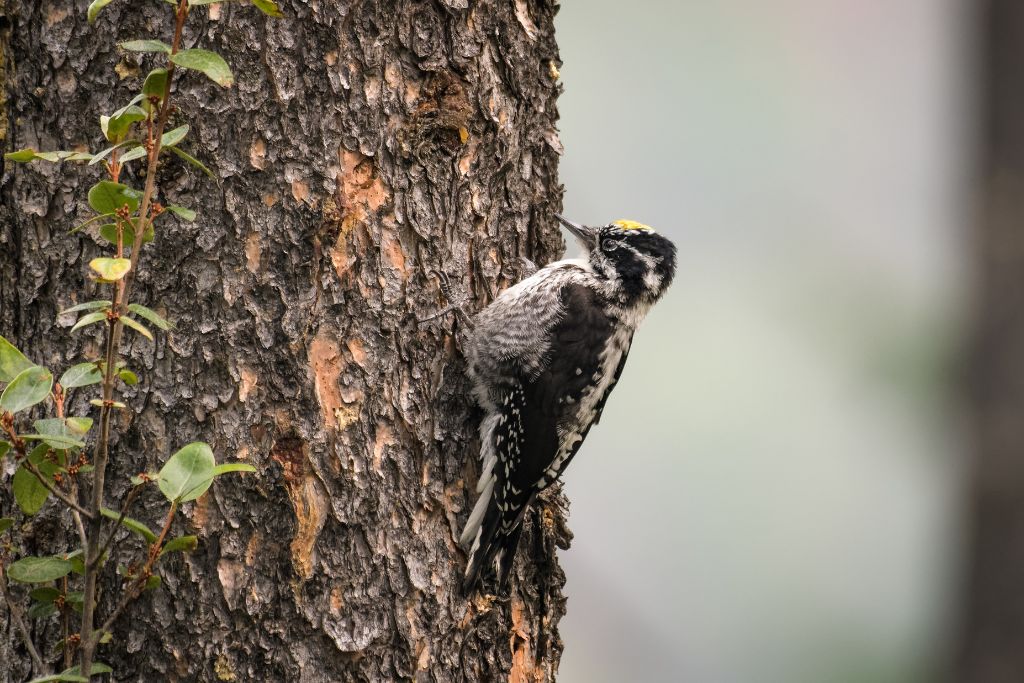
- Kingdom: Animalia
- Phylum: Chordata
- Class: Aves
- Order: Piciformes
- Genus: Picoides
- Species: P. dorsalis
American three-toed woodpecker (Picoides dorsalis) is named after its unique trait of having only three toes instead of the usual four. Dressed in a stylish combination of black and white plumage, it showcases a subtle touch of yellow on its crown. This elegant woodpecker is small, about 7 inches in length.
It relies primarily on bark beetles as its main source of sustenance. With its specialized bill, it skillfully peels back pieces of bark from trees, uncovering the tasty larvae within. This adaption distinguishes it from other woodpeckers since it doesn’t need strong drilling ability.
Found in the dense coniferous forests of North America, from Alaska to the western parts of the United States, it is a true master of camouflage. Its black and white feathers merge with the trees, allowing it to discreetly stalk insects along the trunks and branches. It prefers ancient forests with standing dead trees for ecological balance, decomposition, and bird nesting.
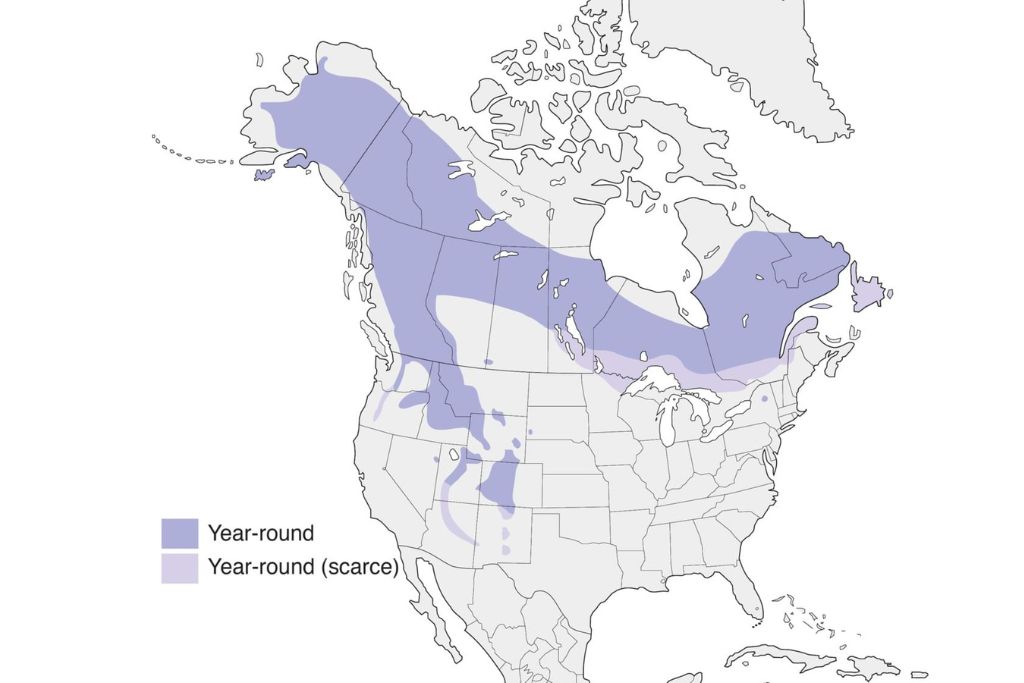
Despite its relatively small size, it compensates for its petite stature with its unique adaptations and resourcefulness. Birdwatchers and nature lovers are fascinated by its hunting methods and capacity to survive in unique surroundings.
2. Downy Woodpecker
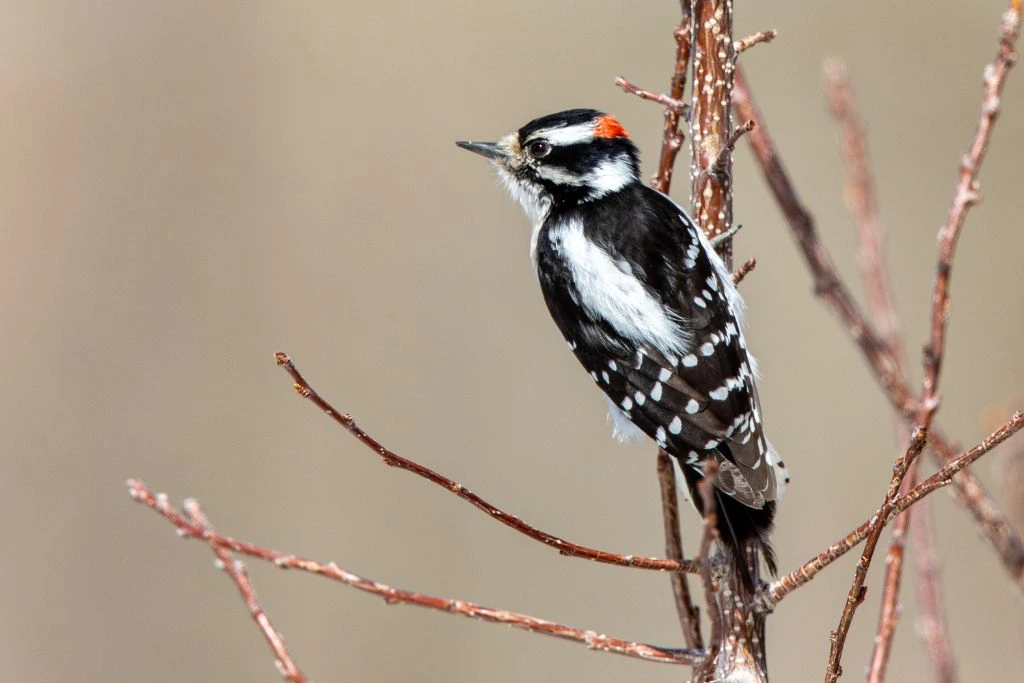
- Kingdom: Animalia
- Phylum: Chordata
- Class: Aves
- Order: Piciformes
- Genus: Dryobates
- Species: D. pubescens
The downy woodpecker (Dryobates pubescens) is a charming and petite bird that captivates birdwatchers and nature enthusiasts alike. Measuring around 6 to 7 inches in length, it is the smallest and most common woodpecker species found in North America.
Its distinguishing features include a black and white plumage, with a striking white underside and a small, black bill.
Due to its powerful feet and thick tail feathers, this woodpecker can simply cling to tree trunks and branches. It taps trees rhythmically as a territorial display or method of communication. Drumming establishes its presence and attracts partners throughout the breeding season.
These resourceful birds have a diverse palate, feeding on insects, larvae, and spiders found beneath the bark of trees. They like eating seeds, berries, and suet from backyard feeders, making them an attraction for birdwatchers of all ages.
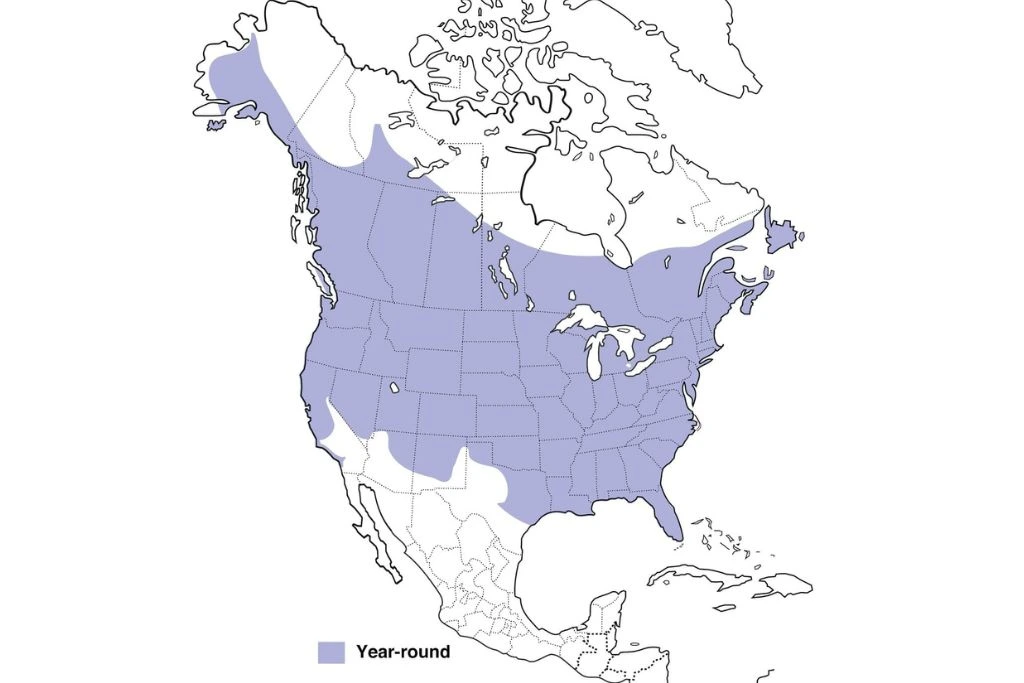
3. Hairy Woodpecker
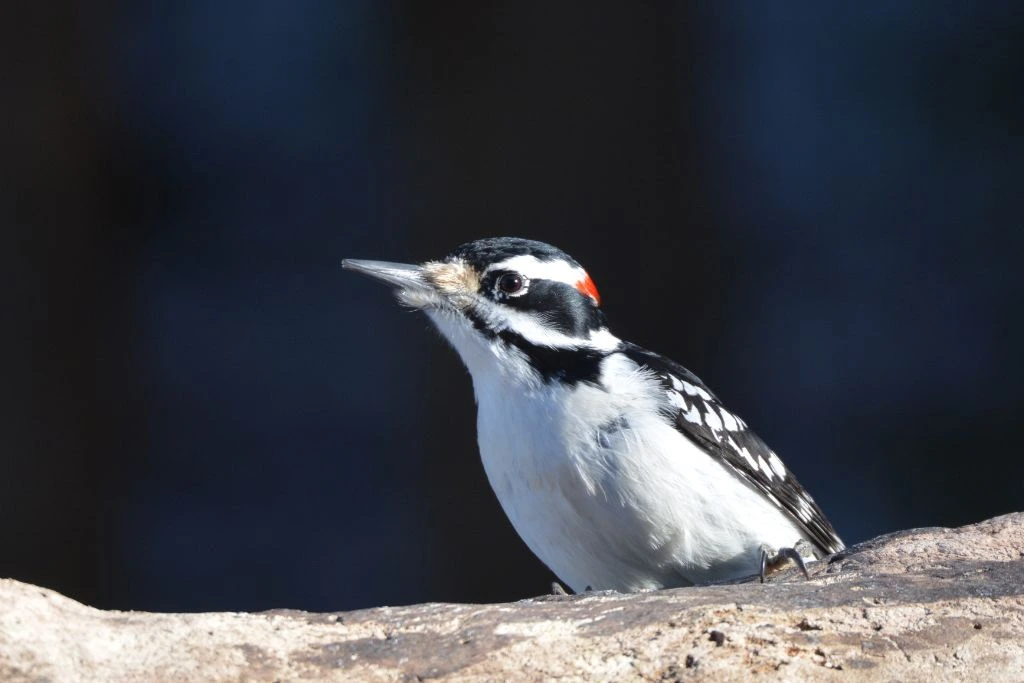
- Kingdom: Animalia
- Phylum: Chordata
- Class: Aves
- Order: Piciformes
- Genus: Leuconotopicus
- Species: L. villosus
The Hairy woodpecker (Leuconotopicus villosus) is a captivating bird that can be found throughout North America. They are bigger than the downy woodpecker, at 9 to 10 inches. Its name originates from the long, hair-like feathers on its head and neck.
Its black back, wings, and tail contrast with its white underside and back patch. This beautiful contrast makes it quite a sight to behold as it moves gracefully through the trees.
Using its sturdy bill, this woodpecker drums on trees with remarkable speed and precision. These pounding noises attract mates, mark territories, and communicate with other woodpeckers. It is truly astonishing how this tiny bird can produce such powerful rhythms by rapidly hammering its beak against tree trunks.
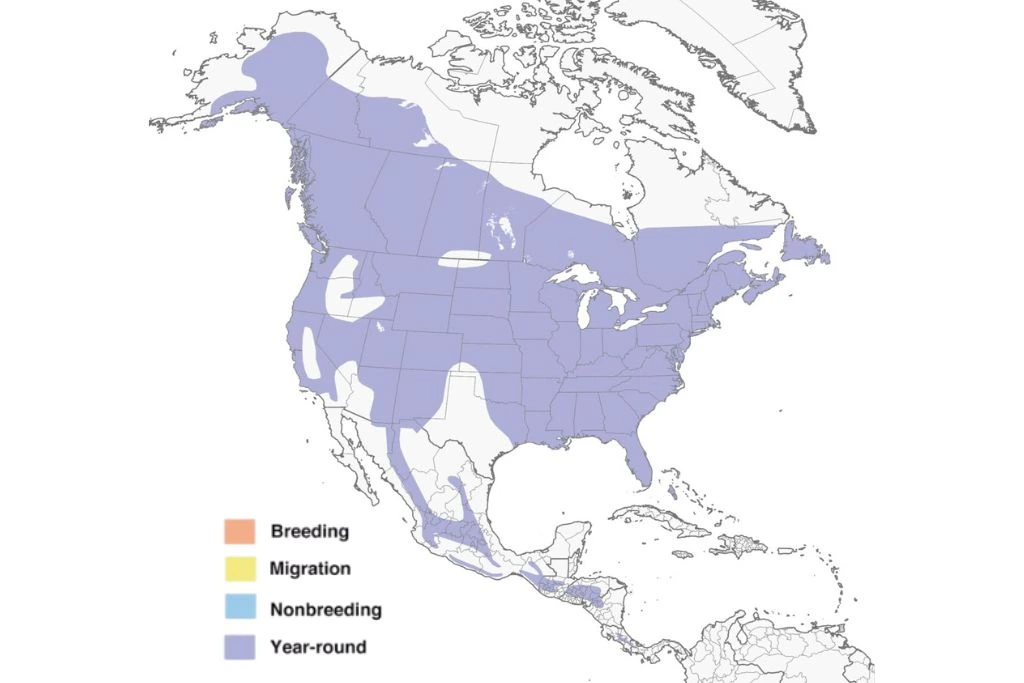
As a true insectivore, it plays a vital role in controlling populations of harmful insects. It penetrates tree bark with its long, pointed beak to find insects and their larvae. It also eats nuts, seeds, and berries throughout the year.
4. Red-Bellied Woodpecker
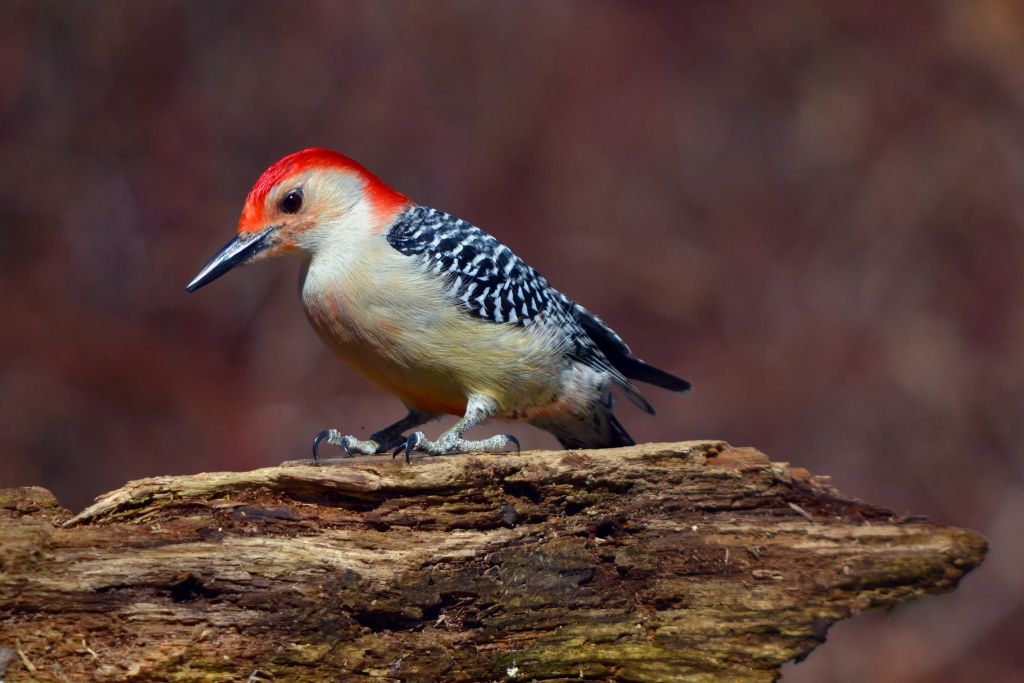
- Kingdom: Animalia
- Phylum: Chordata
- Class: Aves
- Order: Piciformes
- Genus: Melanerpes
- Species: M. carolinus
The red-bellied woodpecker (Melanerpes carolinus) is a captivating avian species that grace North America with its vibrant presence. This 9— to 10-inch woodpecker has a beautiful color combination that draws attention. This woodpecker’s red is more evident on its crown and neck, complementing its black and white barred back and wings.
Despite its name, the red belly isn’t usually apparent during field observations. Observers will perceive a small pinkish or reddish wash on the lower belly, making it fascinating to uncover and appreciate this bird’s unique qualities.
The forests where they live often hear their unique rolling “churr” and high-pitched rattles. These vocalizations serve multiple purposes, including claiming territories, attracting mates, and signaling potential threats.
When digging into trees with its sharp beak, it skillfully props itself up with its powerful tail feathers. Both experienced birdwatchers and newbies love the red-bellied woodpecker’s charming appearance and intriguing vocalizations.
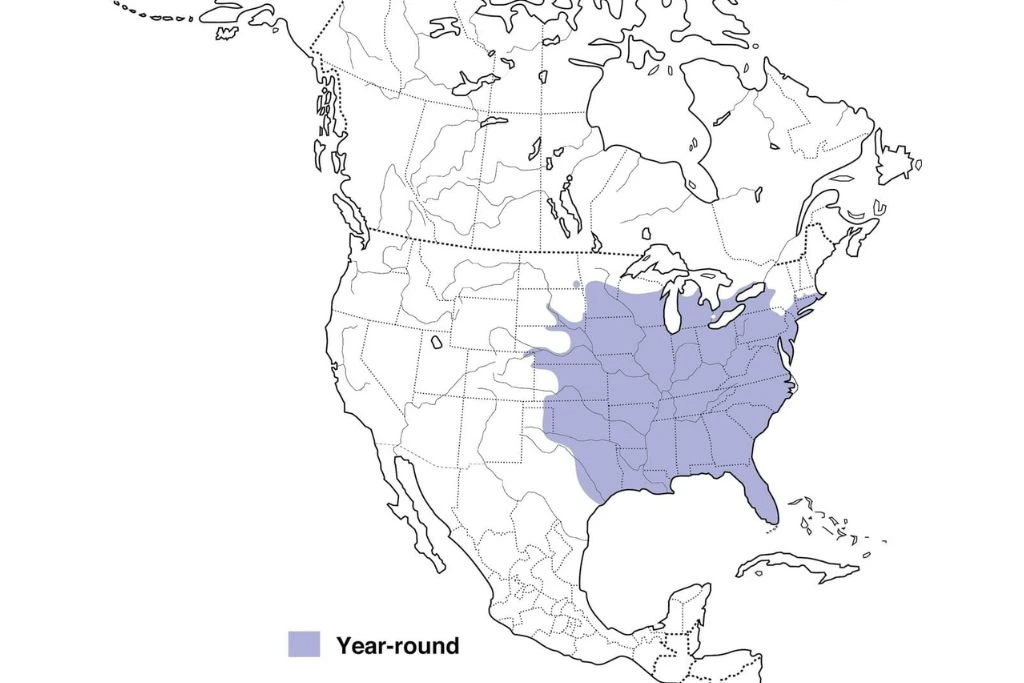
5. Red-Headed Woodpecker
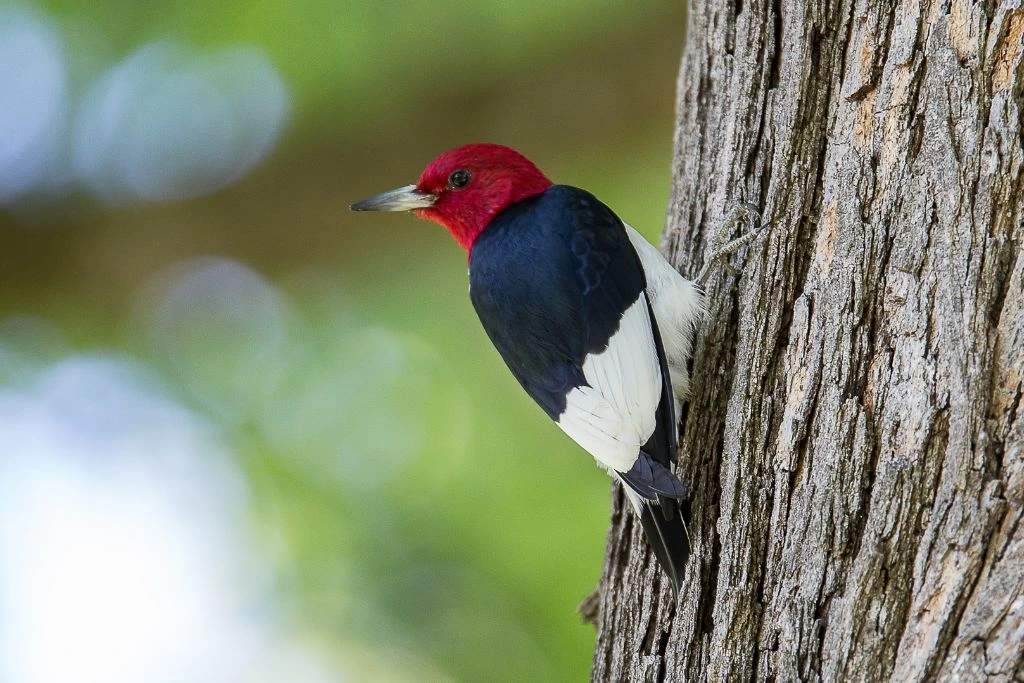
- Kingdom: Animalia
- Phylum: Chordata
- Class: Aves
- Order: Piciformes
- Genus: Melanerpes
- Species: M. erythrocephalus
The red-headed woodpecker (Melanerpes erythrocephalus) has a striking red head, black body, and white belly. This woodpecker’s red plumage extends across its entire crown, neck, and throat, creating a captivating sight for bird enthusiasts.
Its quickness and flexibility in the environment allow it to catch insects in flight as other woodpeckers drum and peck on tree trunks. This woodpecker eats insects, fruits, seeds, and small animals.
These industrious birds pound acorns, nuts, and other food into tree cracks, fence posts, and utility poles. During hard times, this behavior helps them find mates and protect their territory. They recall the locations of their hidden valuables with remarkable accuracy, making their structured storage system astounding.
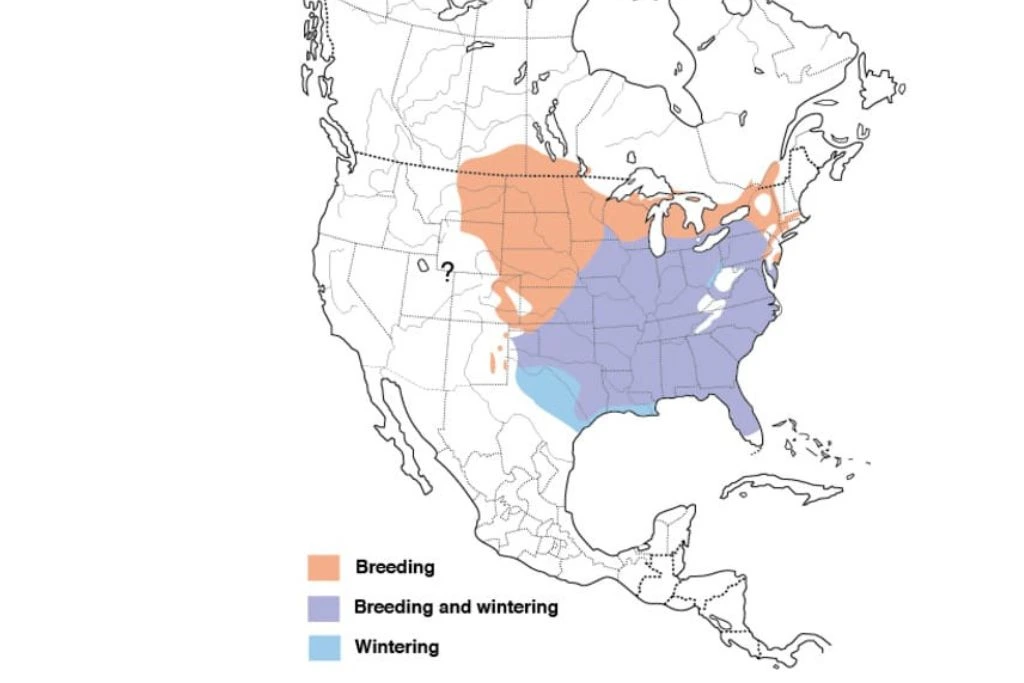
6. Pileated Woodpecker
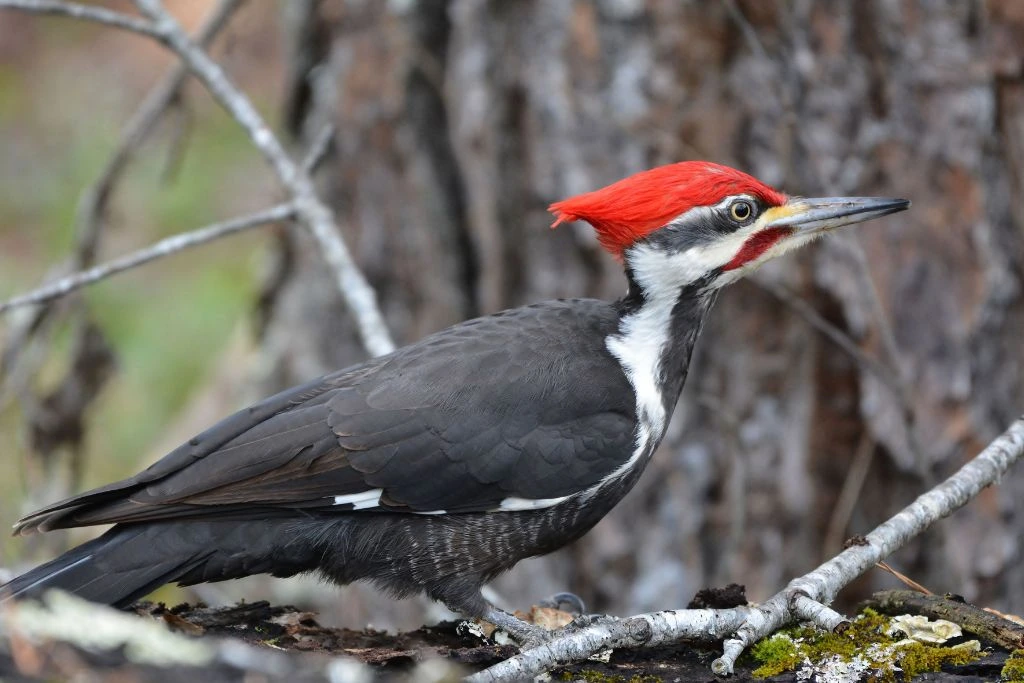
- Kingdom: Animalia
- Phylum: Chordata
- Class: Aves
- Order: Piciformes
- Genus: Dryocopus
- Species: D. pileatus
The pileated woodpecker (Dryocopus pileatus) is the largest of its kind in North America. It measures around 16 to 19 inches in length, with a striking wingspan of up to 30 inches.
This bird is easily identifiable by its stunning black plumage, bright red crest, and white neck. Its unique appearance sets it apart from other woodpecker species, making it easily recognizable in its natural habitat. Both male and female pileated woodpeckers exhibit similar physical characteristics, allowing for easy identification.
With its massive bill and neck muscles, the pileated woodpecker in Michigan can effortlessly carve out massive, rectangular cavities in trees. These cavities serve as both a means of searching for food and a nesting site. Other birds and tiny animals find shelter in these holes, contributing to a diverse ecosystem in the woods.
Its distinctive “kuk-kuk-kuk-kuk” call resonates through the forest, identifying its territory and courting mates. Watching this woodpecker dig a tree or cry demonstrates nature’s beauty and these amazing creatures’ adaptability.
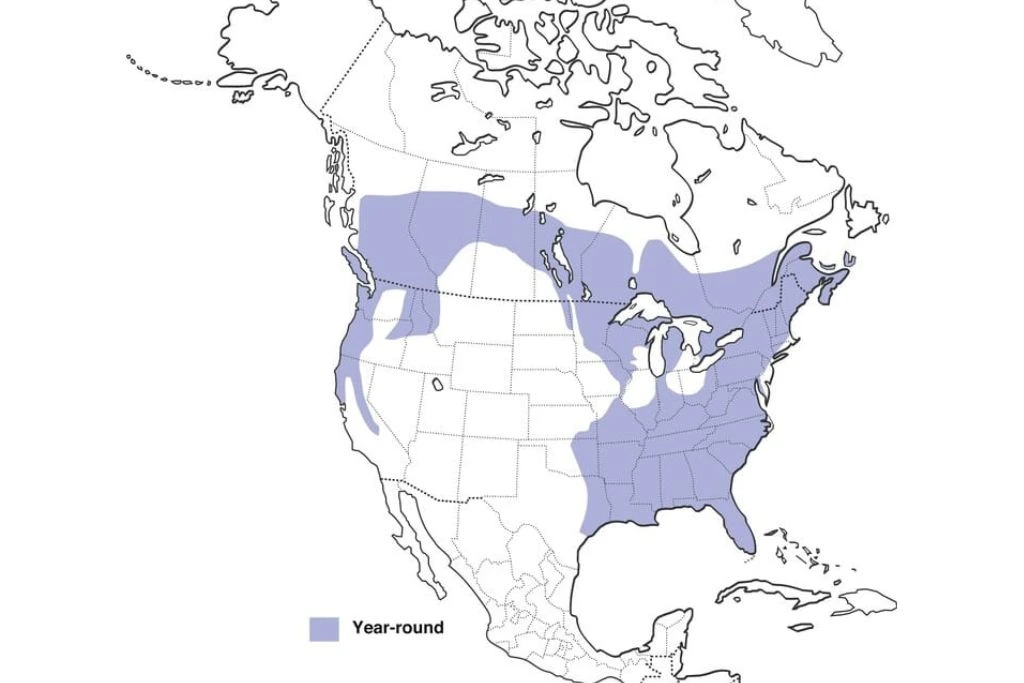
7. Northern Flicker
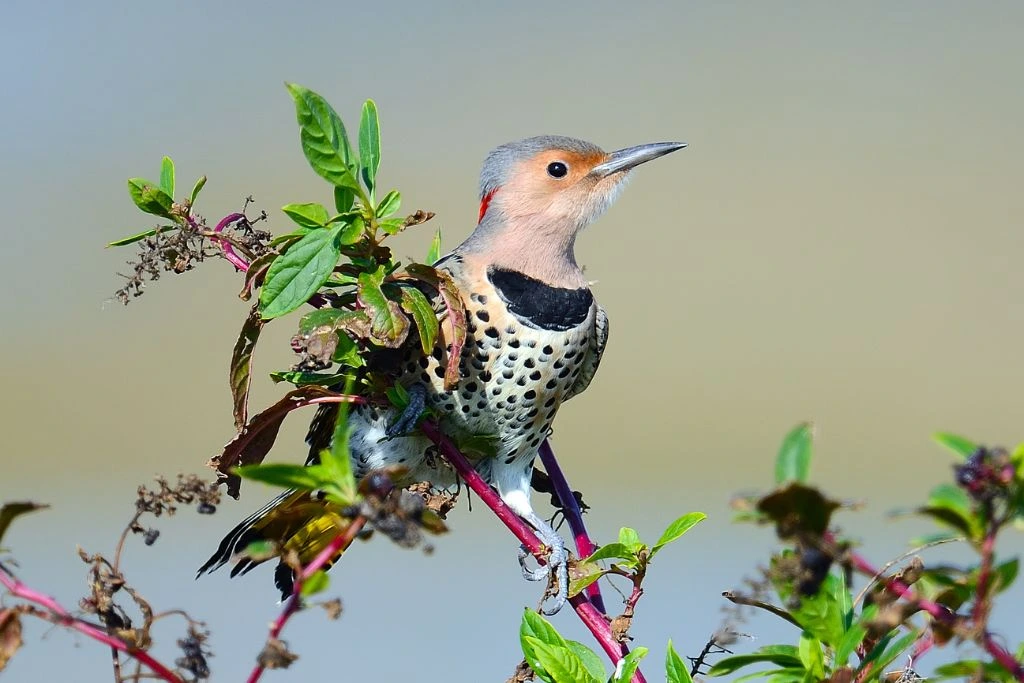
- Kingdom: Animalia
- Phylum: Chordata
- Class: Aves
- Order: Piciformes
- Genus: Colaptes
- Species: C. auratus
Northern flicker (Colaptes auratus), known as the yellowhammer, has a unique blend of colors, patterns, and habits. The bird’s back is adorned with bold black bars, while its underparts showcase a warm palette of creamy beige. This woodpecker’s “mustache” – a black crescent shape on its face – adds refinement to its look.
Unlike other woodpeckers, it hunts ants and beetles on the ground with its powerful beak.
You may also notice the distinctive sound produced by the Northern Flicker, resembling a loud, repeated “wick-a-wick-a-wick.” This vocalization communicates territory and attracts mates during the breeding season.
While observing the northern flicker in action, you might be fortunate enough to witness its remarkable courtship display. Males do a beautiful aerial dance, rising high then falling quickly while calling. Their fascinating performance impresses females with their acrobatic skills and shows off their agility.
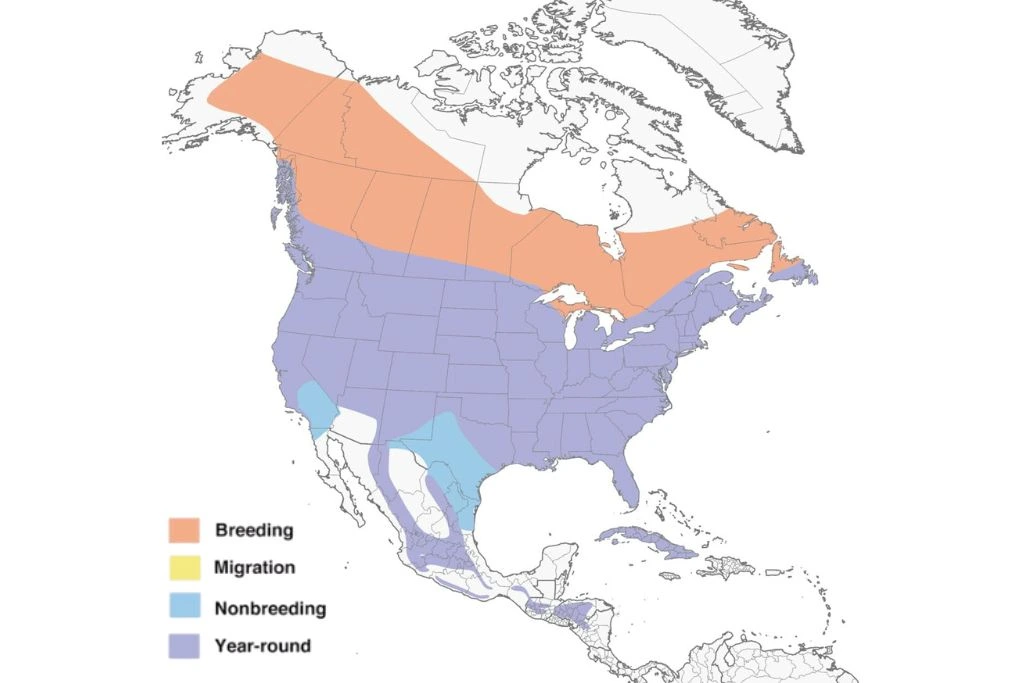
8. Yellow-Bellied Sapsucker

- Kingdom: Animalia
- Phylum: Chordata
- Class: Aves
- Order: Piciformes
- Genus: Sphyrapicus
- Species: S. various
Among woodpeckers, the yellow-bellied sapsucker (Sphyrapicus varius) stands out with its captivating appearance and intriguing behavior. This small- to medium-sized woodpecker is prevalent in North American woodlands, especially in the east and north.
Its plumage features a black and white pattern, with a distinct touch of vibrant yellow on its belly. The males sport a red crown, while females exhibit a more subdued gray crown. Their unusual patterns, rhythmic drumming, and cries make them appealing in the woodland symphony.
While most woodpeckers primarily feed on insects found within tree bark, the sapsucker has developed a unique technique. It drills rows of shallow holes in tree trunks, using its specialized beak to create wells that ooze sap. This not only serves as a source of nutrition for the sapsucker but also attracts insects that get caught in the sticky substance.
Despite its name, the yellow-bellied sapsucker’s diet is not limited to sap and insects. They eat berries and fruits during the breeding season to enhance their nutrition. These adaptable birds nest in dying trees in coniferous and mixed woodlands.

9. Black-Backed Woodpecker
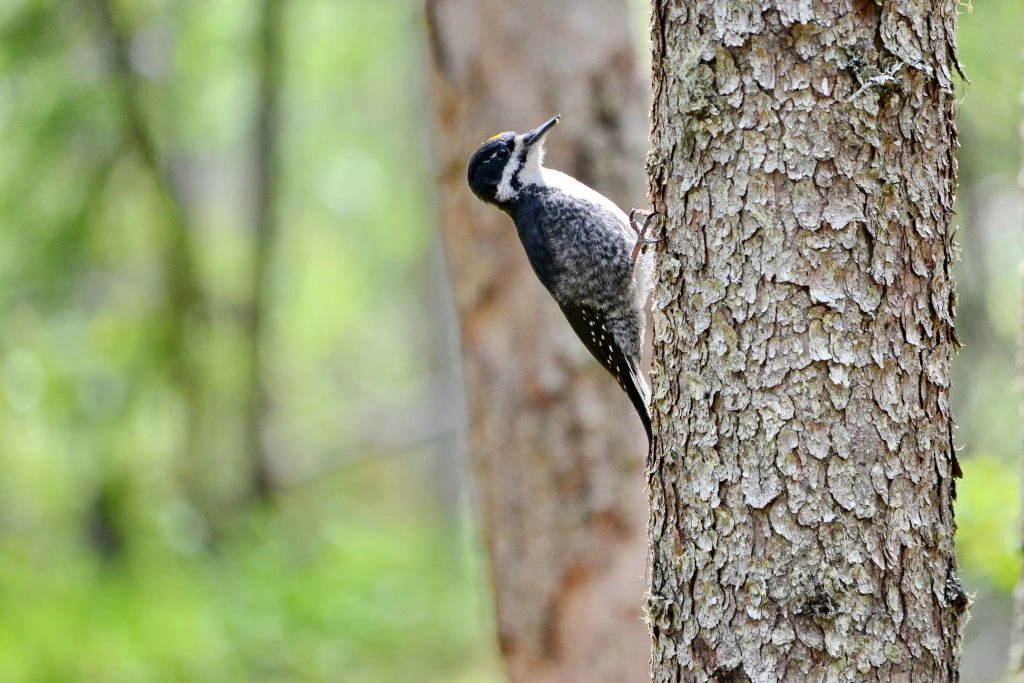
- Kingdom: Animalia
- Phylum: Chordata
- Class: Aves
- Order: Piciformes
- Genus: Picoides
- Species: P. arcticus
The black-backed woodpecker (Picoides arcticus) stands out in dense woodland foliage with its black plumage and white wing patch.
Unlike other woodpecker species, this remarkable bird thrives in recently burned or disturbed forests. It uses its powerful beak to dig burned trees for insects and larvae, adapting well to post-fire settings. In fact, the black-backed woodpecker is considered a “pyrophilous” species, meaning it is dependent on fire for its survival.
What sets this bird apart is its exceptional ability to detect and locate wood-boring beetles, which infest burned trees. Its unique bill chops away bark and burned wood to reveal a feast of tasty insects. This woodpecker controls insect populations and regenerates burned woodlands by its feeding.
Despite its affinity for fire-ravaged landscapes, the black-backed woodpecker faces some challenges. These robust species lose habitats when wildfire suppression and logging methods change. To protect these majestic birds and their unique function in forest ecosystems, conservation activities are essential.
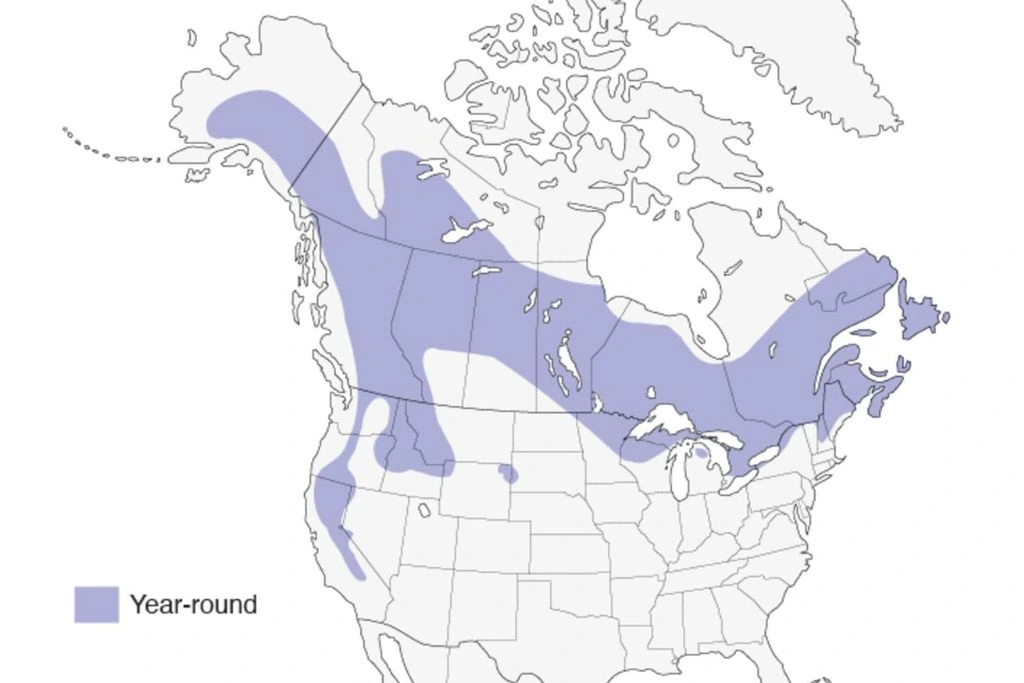
10. Lewis’s Woodpecker
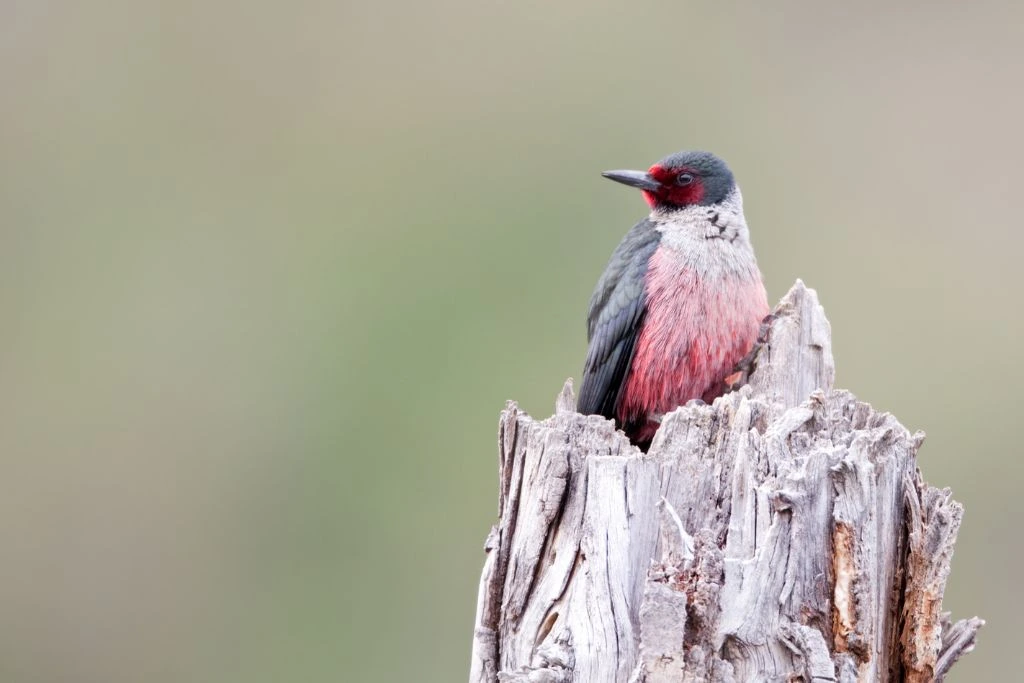
- Kingdom: Animalia
- Phylum: Chordata
- Class: Aves
- Order: Piciformes
- Genus: Melanerpes
- Species: M. lewis
Lewis’s woodpecker (Melanerpes lewis) is named after the renowned American explorer, Meriwether Lewis. This bird is a picidae species and is found in California, Nevada, Oregon, and Washington.
Its glossy black plumage covers its head, back, and wings. The woodpecker’s pinkish-red belly contrasts with its black attire, adding to its appeal.
While most woodpeckers rely on tree trunks for foraging, this species showcases a preference for aerial hunting. Using its powerful flight, Lewis’s woodpecker catches insects mid-air, displaying impressive agility and precision. It is also known to feed on berries and occasionally indulge in sap from tree wounds.
Another noteworthy characteristic of Lewis’s woodpecker is its charming vocalizations. The bird’s vocal repertoire includes a variety of sounds, ranging from soft coos to resonant chatters. These cries attract mates, protect territory, and communicate with other woodpeckers.
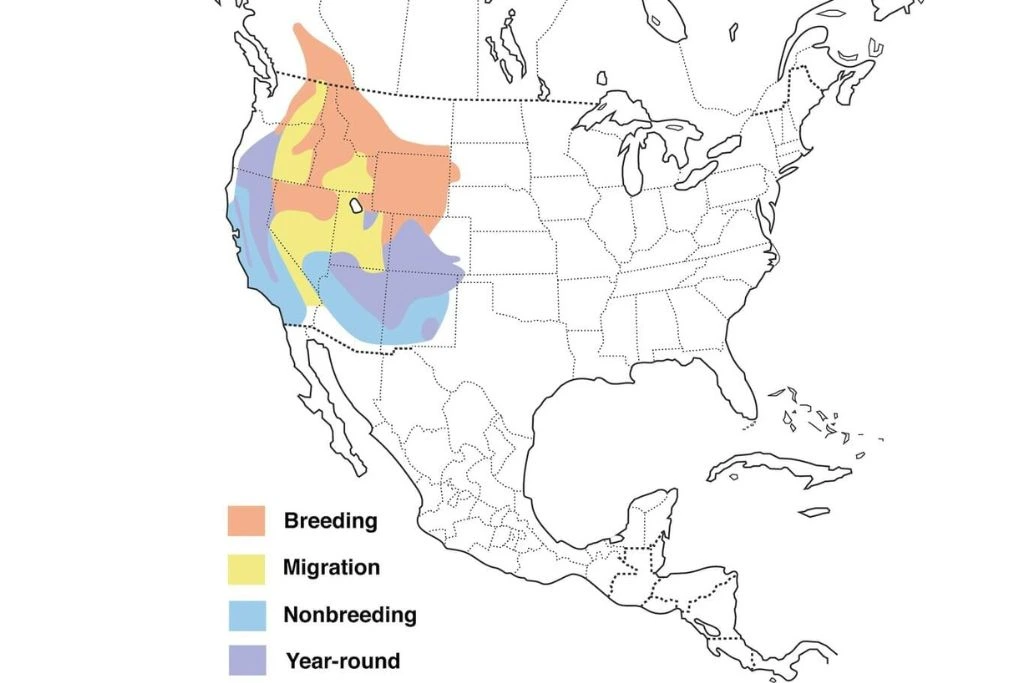
FAQs
Do Large Woodpeckers In Michigan Cause Damage To Trees?
No. Their pecking may create visible holes in the bark, but it is usually not a significant threat to the overall well-being of healthy trees.
How Can I Attract Woodpeckers to My Yard in Michigan?
To attract woodpeckers, consider providing a habitat that offers a variety of food sources and nesting opportunities. Plant native trees and shrubs that produce berries and fruits, and set up bird feeders with suet or nuts. They might be attracted to areas with dead or rotting trees because these trees provide natural perches and nesting locations.
Can I Identify Woodpeckers in Michigan by Their Drumming Sounds?
Yes, woodpeckers often use drumming sounds as a form of communication and territory marking. Each woodpecker species has a distinctive drumming pattern, which can aid in their identification. Listen to the drumming rhythm and intensity, and use visual cues to identify Michigan woodpecker species.

